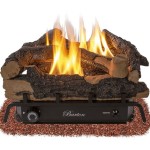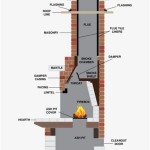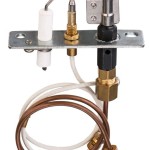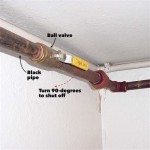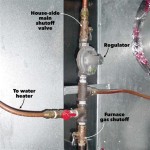Lennox Gas Fireplace User Manual: A Comprehensive Guide
The Lennox gas fireplace user manual serves as a critical resource for homeowners seeking to safely and effectively operate and maintain their gas fireplace. This document provides detailed instructions, safety guidelines, troubleshooting tips, and maintenance schedules crucial for maximizing the lifespan and performance of the appliance. Understanding and adhering to the information contained within the manual helps ensure safe operation, efficient heating, and minimizes the risk of malfunctions or hazardous situations.
The user manual is tailored to specific Lennox gas fireplace models, therefore, it is imperative to consult the manual that corresponds directly to the model installed in the home. Model identification can usually be found on a rating plate located on the fireplace itself, often within the control compartment or on the door frame. Ignoring the specific instructions for a particular model can lead to incorrect operation and potential damage.
This article will explore key aspects of the Lennox gas fireplace user manual, focusing on safety precautions, operating procedures, maintenance recommendations, and troubleshooting strategies. Accessing and understanding these elements are vital for a positive and safe experience with the fireplace.
Safety Precautions and Important Warnings
The Lennox gas fireplace user manual emphasizes numerous safety precautions that must be diligently followed. One of the most crucial aspects is ensuring proper ventilation. Gas fireplaces consume oxygen and produce combustion byproducts, including carbon monoxide. Adequate ventilation is essential to prevent the build-up of these hazardous gases within the home. The manual typically outlines the specific ventilation requirements for the model, which might include ensuring the chimney or vent system is unobstructed and functioning correctly. It is important to have a professional chimney sweep inspect and clean the venting system annually to remove any debris that could impede airflow.
Carbon monoxide detectors are an indispensable safety device in any home with a gas appliance. The user manual strongly recommends installing and maintaining carbon monoxide detectors near the fireplace and in sleeping areas. These detectors provide an early warning of dangerous carbon monoxide levels, allowing occupants to evacuate the premises before serious health consequences occur. The user manual will typically provide instructions on how to test and maintain the carbon monoxide detectors and recommend replacing batteries regularly.
Another critical safety concern addressed in the manual is the safe handling of gas. The manual instructs users on how to recognize the smell of gas (usually a rotten egg smell) and what steps to take if a gas leak is suspected. These steps typically include immediately evacuating the building, contacting the gas company or fire department from a safe location, and avoiding the use of any electrical devices or open flames that could ignite the gas. Never attempt to repair a gas leak without professional assistance.
The user manual also emphasizes the importance of keeping combustible materials away from the fireplace. This includes furniture, curtains, rugs, and paper. The manual specifies the minimum clearance distances required between the fireplace and these materials to prevent accidental fires. Children and pets should also be supervised around the fireplace to prevent them from touching the hot surfaces or interfering with the controls.
Finally, the user manual often includes warnings about the dangers of modifying the fireplace in any way. Altering the fireplace's design, components, or gas supply can compromise its safety and efficiency and may void the warranty. All repairs and maintenance should be performed by qualified technicians who are trained to work on gas appliances.
Operating Procedures and Control Functions
The Lennox gas fireplace user manual details the specific operating procedures for the fireplace model. These procedures typically cover ignition, flame adjustment, and shutdown. Understanding these steps is crucial for safe and efficient operation. The manual generally outlines the different control functions available, which may include a remote control, thermostat, and manual controls located on the fireplace itself.
The ignition process typically involves activating a pilot light or electronic ignition system. The manual provides step-by-step instructions on how to safely ignite the pilot light, if applicable, and how to activate the main burner. The manual also describes the different flame height settings and how to adjust the flame to achieve the desired level of heat and ambiance. It is important to never tamper with the gas valve or pressure regulator, as this can create a dangerous situation.
Many Lennox gas fireplaces are equipped with a remote control that allows users to adjust the flame height, set the temperature, and program the fireplace to turn on and off at specific times. The user manual explains the functions of the remote control and how to use it effectively. Some models also have a thermostat that automatically regulates the flame height to maintain a desired room temperature.
The shutdown procedure is equally important as the ignition procedure. The manual instructs users on how to safely turn off the fireplace, which typically involves turning the gas valve to the "off" position and extinguishing the pilot light, if applicable. Following the correct shutdown procedure ensures that the gas supply is completely shut off and prevents accidental gas leaks.
Furthermore, the user manual often includes instructions on how to use any additional features of the fireplace, such as a blower fan or decorative lighting. The blower fan helps to circulate the heat from the fireplace more efficiently, while the decorative lighting enhances the ambiance of the room. The manual provides guidance on how to operate these features and adjust them to suit individual preferences.
Maintenance Recommendations and Troubleshooting Tips
Regular maintenance is essential for ensuring the long-term performance and safety of the Lennox gas fireplace. The user manual provides a detailed maintenance schedule that outlines the tasks that should be performed on a regular basis. These tasks typically include cleaning the glass door, inspecting the burner assembly, and checking the venting system.
Cleaning the glass door is important for maintaining a clear view of the flames. The manual recommends using a non-abrasive glass cleaner and a soft cloth to remove any soot or residue that has accumulated on the glass. Avoid using harsh chemicals or abrasive cleaners, as these can damage the glass surface.
Inspecting the burner assembly involves checking the burner ports for any blockages or debris. The manual may provide instructions on how to clean the burner ports using a soft brush or vacuum cleaner. Proper burner maintenance ensures that the gas flows evenly and efficiently, resulting in a consistent and attractive flame.
Checking the venting system involves inspecting the chimney or vent pipe for any signs of damage or blockage. The manual may recommend having a professional chimney sweep inspect the venting system annually to ensure that it is functioning properly. A properly functioning venting system is crucial for preventing the build-up of carbon monoxide in the home.
The user manual also includes troubleshooting tips for common problems that may arise with the fireplace. These tips can help users diagnose and resolve minor issues without the need for professional assistance. Common troubleshooting topics include problems with ignition, flame instability, unusual noises, and gas odors. However, it is important to emphasize that any complex repairs or gas-related issues should be handled by a qualified technician.
For example, if the fireplace fails to ignite, the manual may suggest checking the gas supply, the pilot light (if applicable), and the ignition system. If the flame is unstable, the manual may recommend checking the burner ports for obstructions and ensuring that the venting system is clear. If there is an unusual noise coming from the fireplace, the manual may suggest checking the blower fan or other moving components. And if there is a gas odor, the manual emphasizes the importance of evacuating the building and contacting the gas company or fire department immediately.
By following the maintenance recommendations and troubleshooting tips outlined in the Lennox gas fireplace user manual, homeowners can help ensure the safe, efficient, and long-lasting operation of their gas fireplace. Consistently consulting the manual remains crucial particularly when encountering any unfamiliar issues.

Lennox L30 Dvf 2 Rev B User Manual Gas Lxl30dvf 2rb Woodheatstoves Com

Lennox L20 Dvf 2 Bf Rev C User Manual Woodheatstoves Com

A Plus Inc Lennox Edv4540 Replacement Pants And Accessories

Gas Fireplace Propane Bdm35p The Cozy Cabin Lennox Hearth Parts

Lennox L20 Dvf 2 Bf User Manual Woodheatstoves Com

A Plus Inc Lennox Ebvst Replacement Parts And Accessories

Lennox Mpd 3530cnm B Installation Instructions Manual Manualslib

Superior Direct Vent Natural Gas Fireplace Heater With Electronic Controls Dt 500cen The Cozy Cabin Lennox Hearth Parts

Merit Plus Series Lp Gas Fireplace With Millivolt Control Mpldv 45pm The Cozy Cabin Lennox Hearth Parts

A Plus Inc Lennox Lsm40 Montebello Replacement Parts And Accessories



